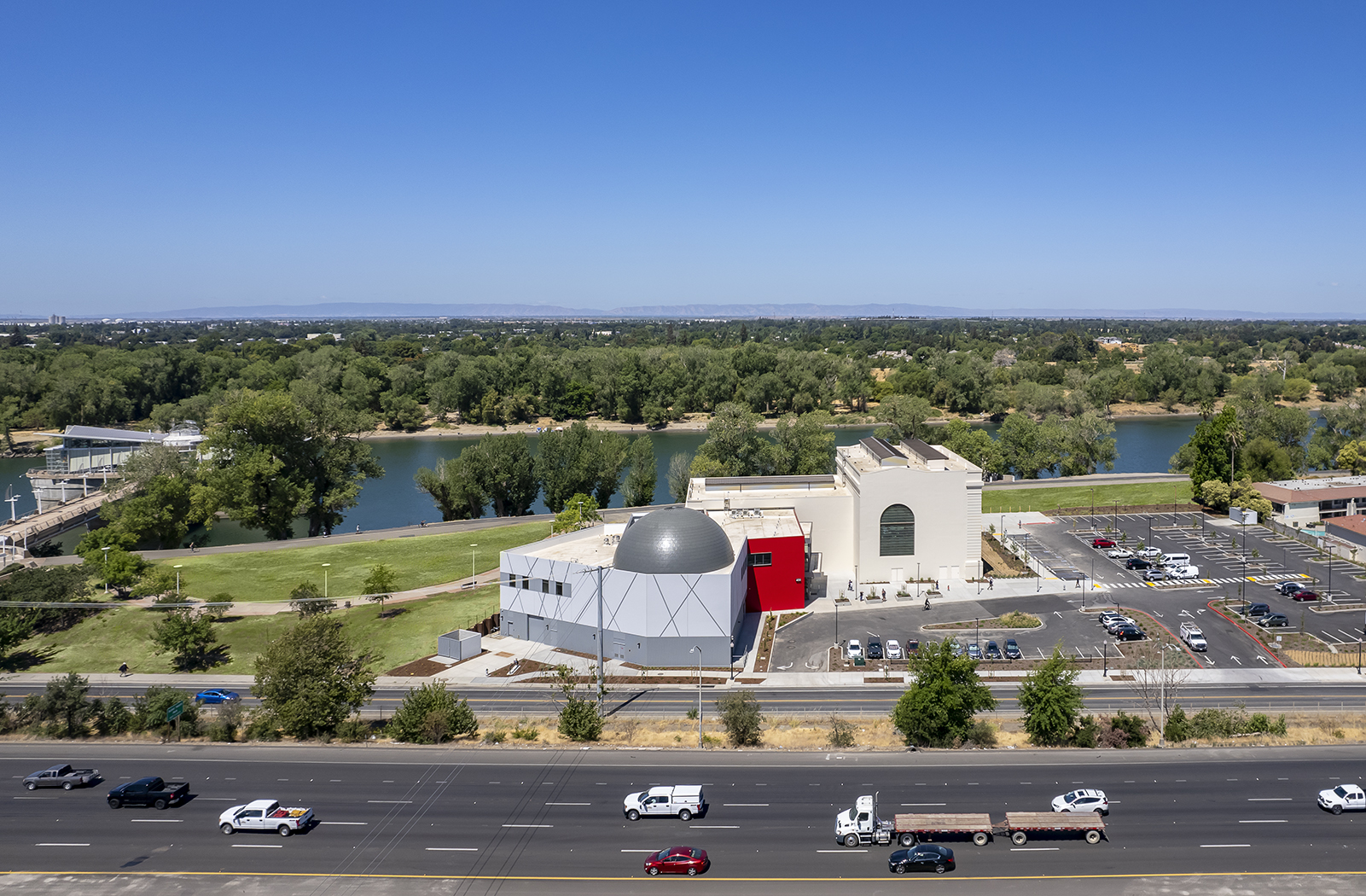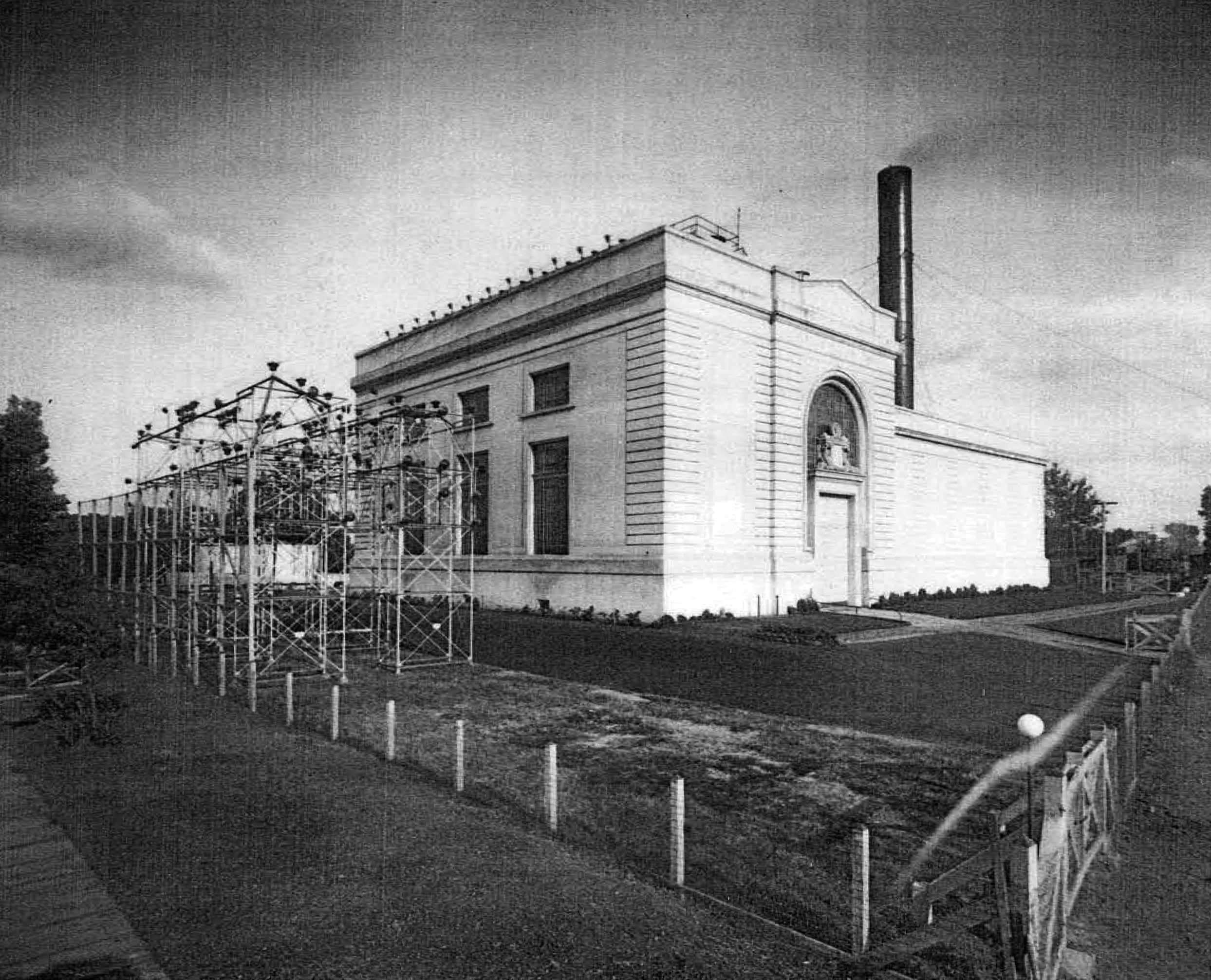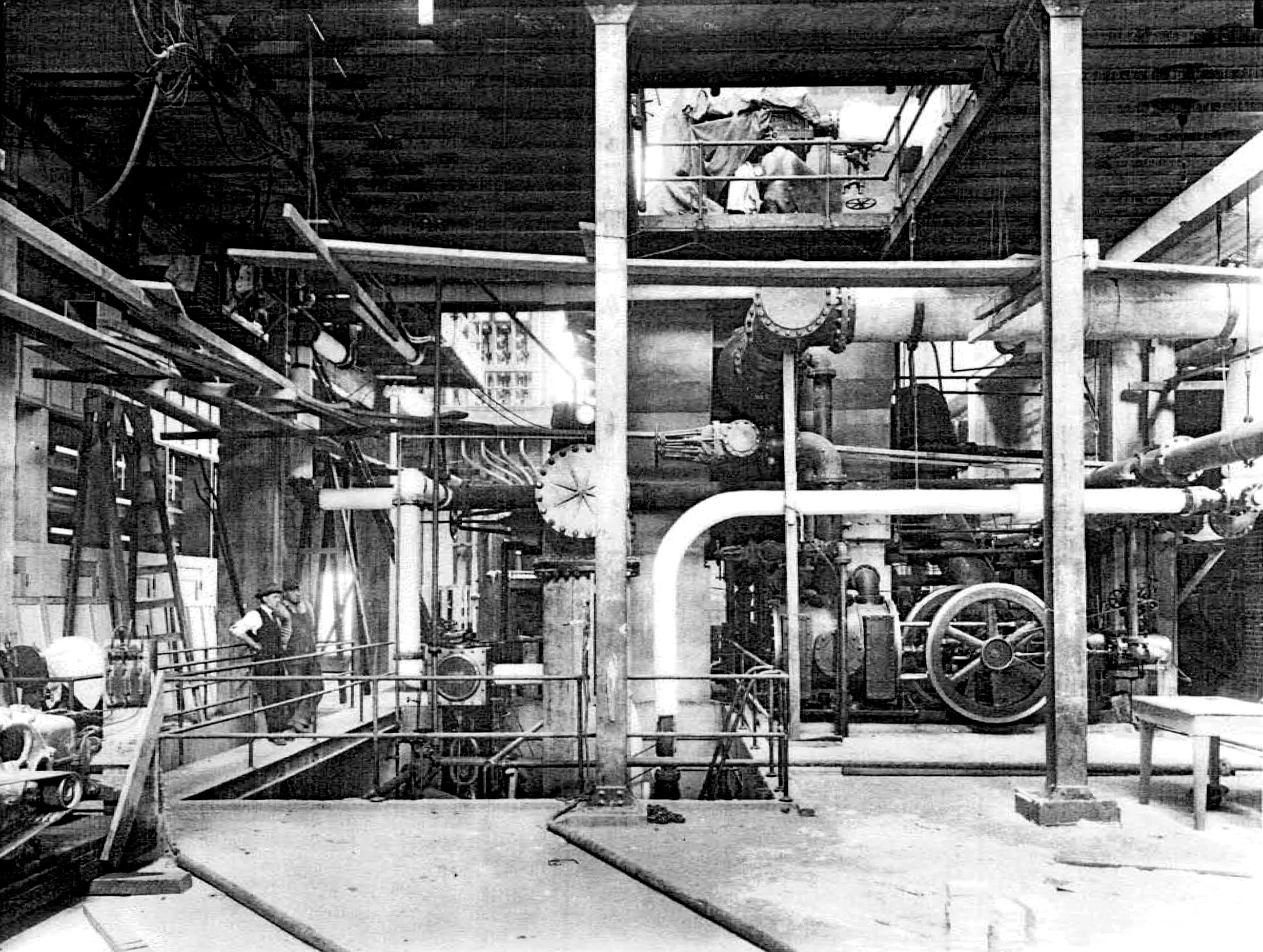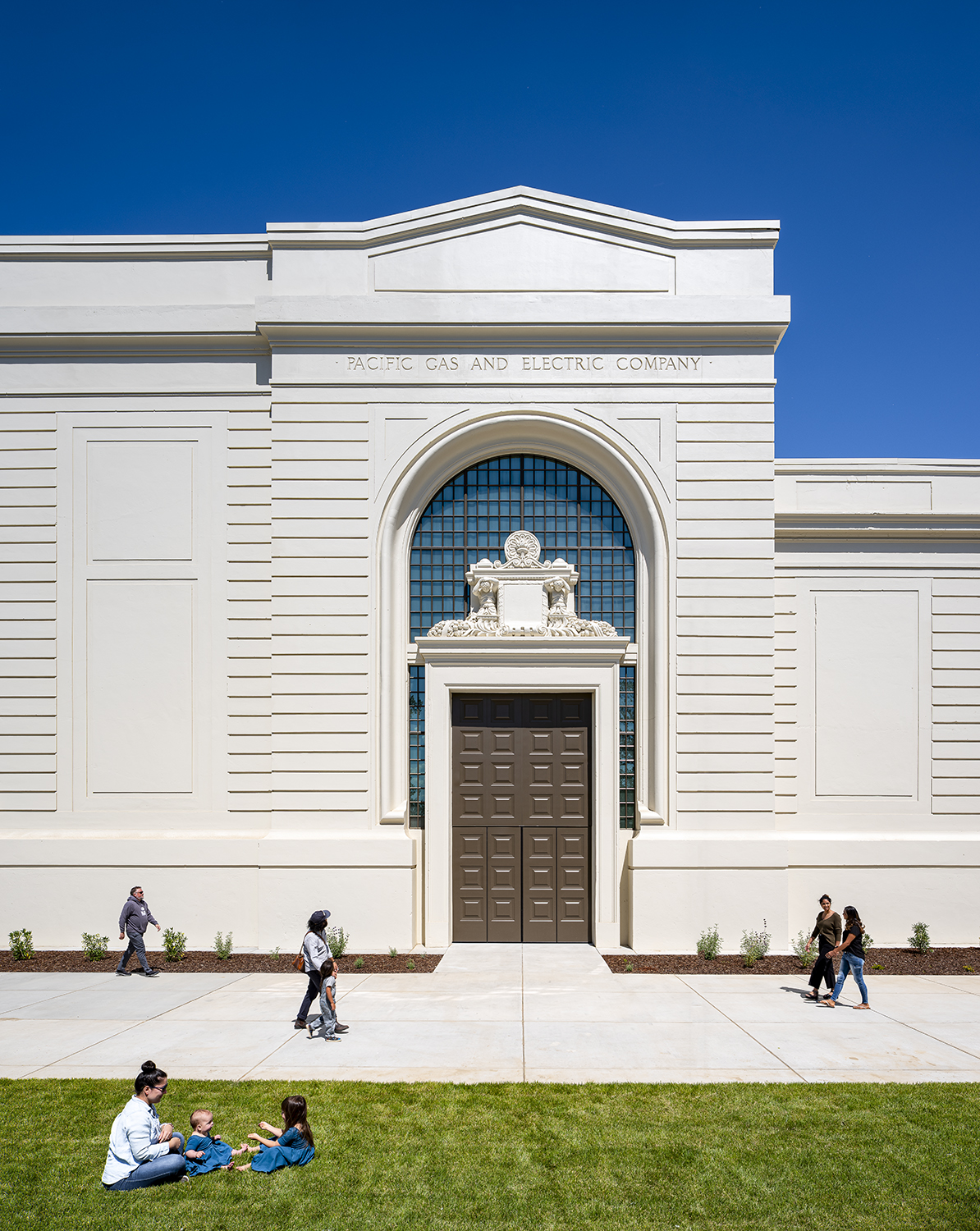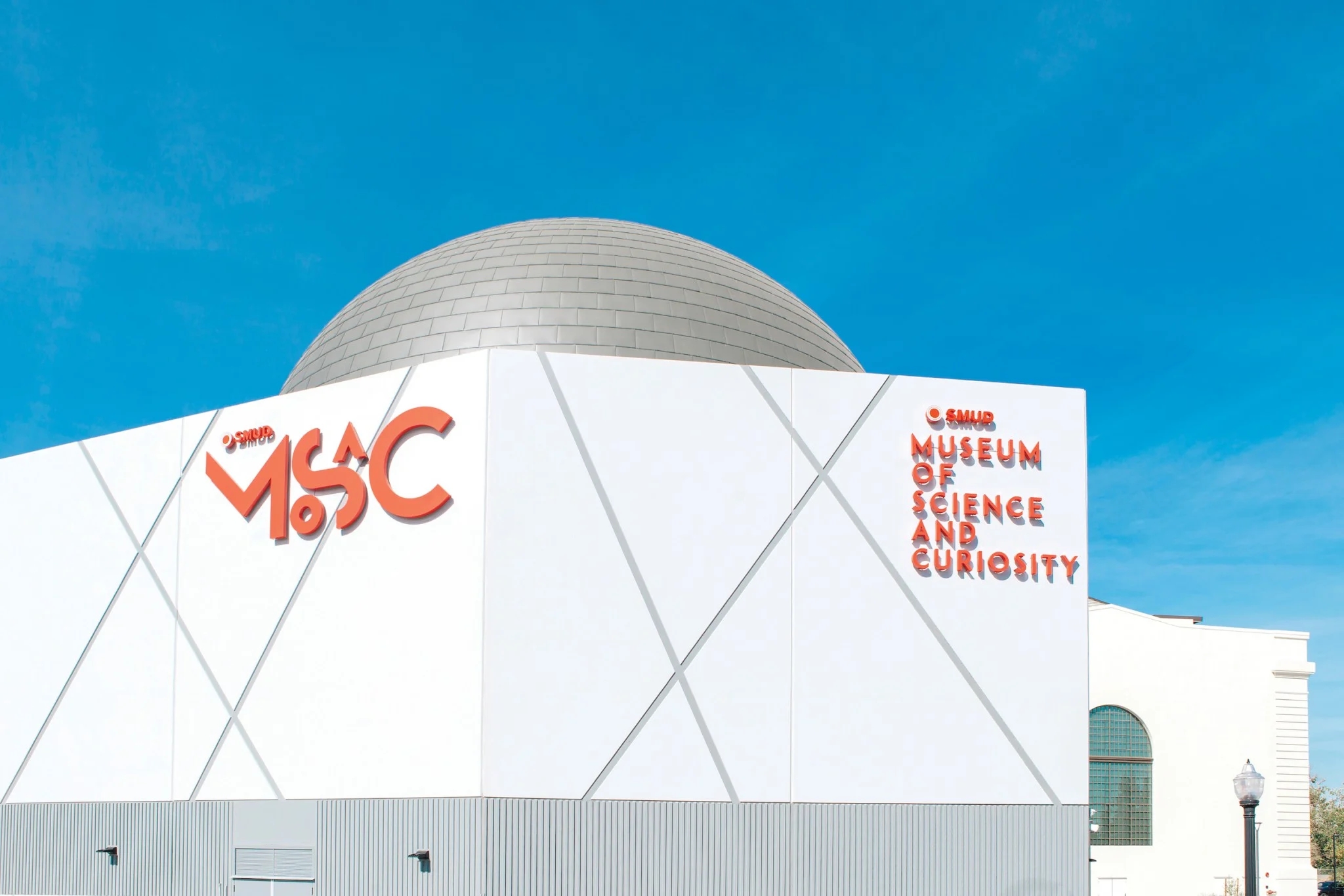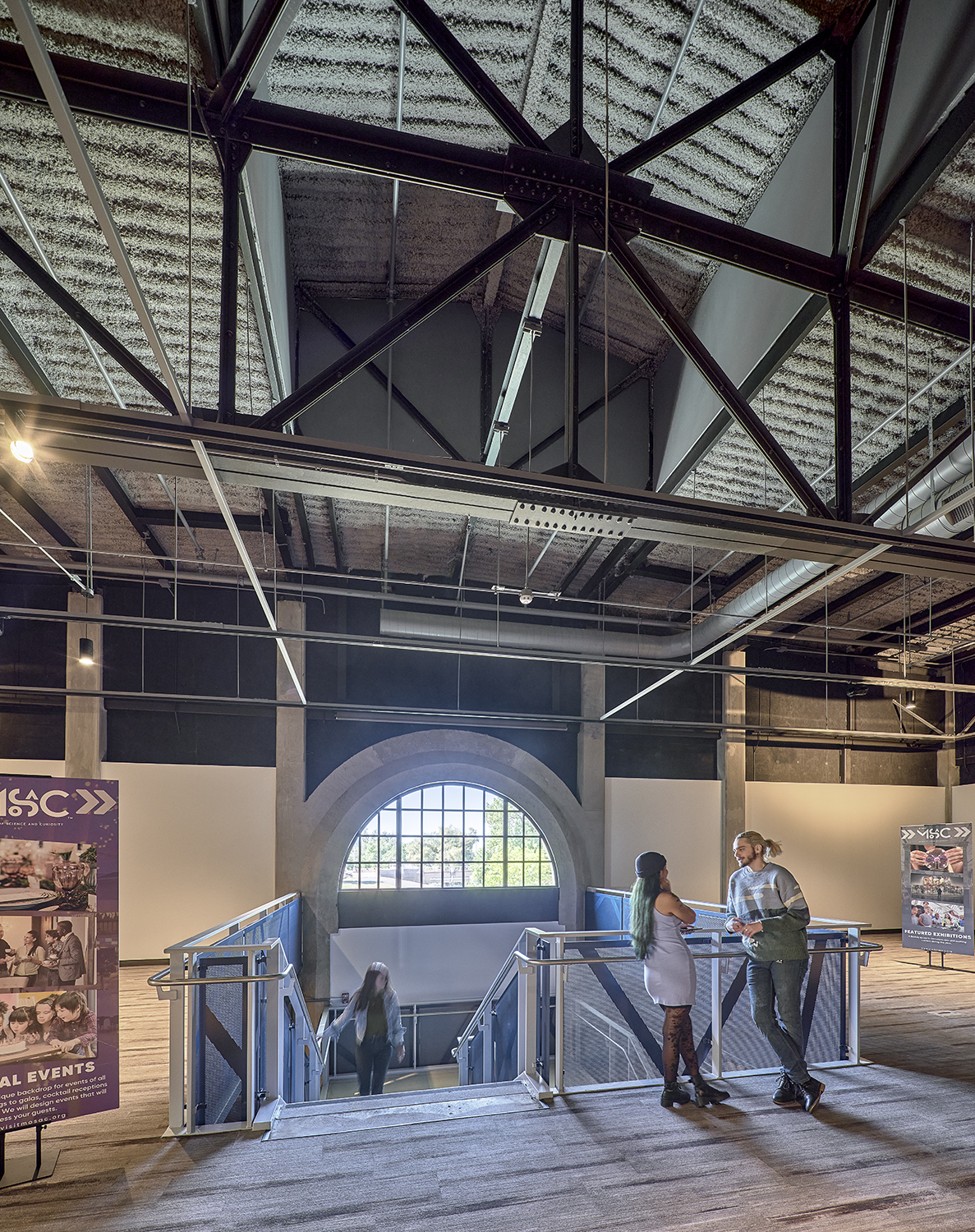Riverfront Recharge
May 2, 2022
From the May 2, 2022 issue of
Architect’s Newspaper.
By Matt Hickman
Dreyfuss + Blackford’s reimagining of a decrepit power station breathes new life into the Sacramento riverfront
Longtime residents of Sacramento and generations of commuters passing through the region know exactly the spot.
Joined by a cluster of budget motels on an isolated, wedge-shaped swath of land squeezed between Interstate 5 and the Sacramento River just south of where it meets the American River, for decades has stood as the city’s most conspicuous—and enigmatic—blighted building: a stately, William Polk–designed Beaux-Arts power station completed in 1912 as a shining exemplar of the City Beautiful movement that has been left forsaken for the better part of the last 70 years, fenced-off and frozen in a state of dilapidation within a contaminated, flood-prone site.
However, those passing by the Pacific Gas & Electric Company’s old River Station B in recent months have likely noticed a change. Preceded by a flurry of construction work that kicked off in 2018, the National Register of Historic Places–listed structure’s decades-spanning run as Sacramento’s most visible abandoned building finally came to an end late last year. The fences have come down and the graffiti has been scrubbed away in the long-awaited redevelopment of the five-and-a-half-acre site into the SMUD Museum of Science and Curiosity, or MOSAC.
Blending adaptive reuse with new construction, the more than 15-years-in-the-making transformation of River Station B was led by local architecture and planning firm Dreyfuss + Blackford. To the firm’s credit, the resuscitated site is no less rubberneck-inducing from the freeway than it was before thanks to a zinc-clad hemispheric dome that now rises above the Sacramento River alongside the painstakingly restored power station.
“All though construction, I’d say ‘I’m working on the Museum of Science and Curiosity, it’s the building by the river’—and that’s all I’d have to say,” Chris Holt, project manager with Dreyfuss + Blackford, relayed to AN. “Everyone knew exactly what building we were talking about. And everybody was excited that something was being done with it.”
“We were worried that people would veer off the road during construction because of what they were seeing,” added Jennifer Costa with a laugh. An associate and project manager with Dreyfuss + Blackford, Costa has worked on the rebirth of River Station B in its multiple iterations, including as historic preservation architect.
Full STEAM ahead
The long-awaited November 2021 public debut of Sacramento’s $40.8 million new STEAM-focused educational institution—it was previously known as the Powerhouse Science Center being rebranded and renamed in 2020 as MOSAC—marks a new era for the ruinous riverfront site following a string of failed redevelopment schemes proposed after the property was first purchased by the State of California in 1960 from the AMC scrap metal company; AMC had acquired the site from PG&E three years prior. (During its brief ownership, AMC brought down the power plant’s smokestacks and gutted its interior, massive boiler and turbines included, with plans to use it as a temporary warehouse space.)
Scrapped proposals for the site include a railroad museum in the 1970s, a vintage car museum in the mid-80s, and the Water Palace, a ‘90s-era scheme for a new riverfront headquarters for the California Department of Water Resources that was ultimately shelved due to the site’s precarious location within a high-risk flood plain. (Dreyfuss + Blackford also helmed the design for that never-realized effort.)
In 2000, following four decades of state ownership and a handful of never-realized revitalization plans, hazardous waste cleanup work wrapped up and the site was deeded to the City of Sacramento. This change of hands spurred a renewed search for viable redevelopment proposals. Among them was a vision from Evangeline Higginbotham, the late executive director of Sacramento’s Discovery Museum Science & Space Center, the predecessor organization to the Powerhouse Science Center, now MOSAC. With the Discovery Museum looking to expand out its then-current home, she proposed turning the blighted River Station B site into a regional science education and exploration hub. Unlike previous proposals, her vision held thanks to a public-private partnership between the Science Center, the City of Sacramento, the Sacramento County Office of Education, and the Sacramento Municipal Utility District (SMUD).
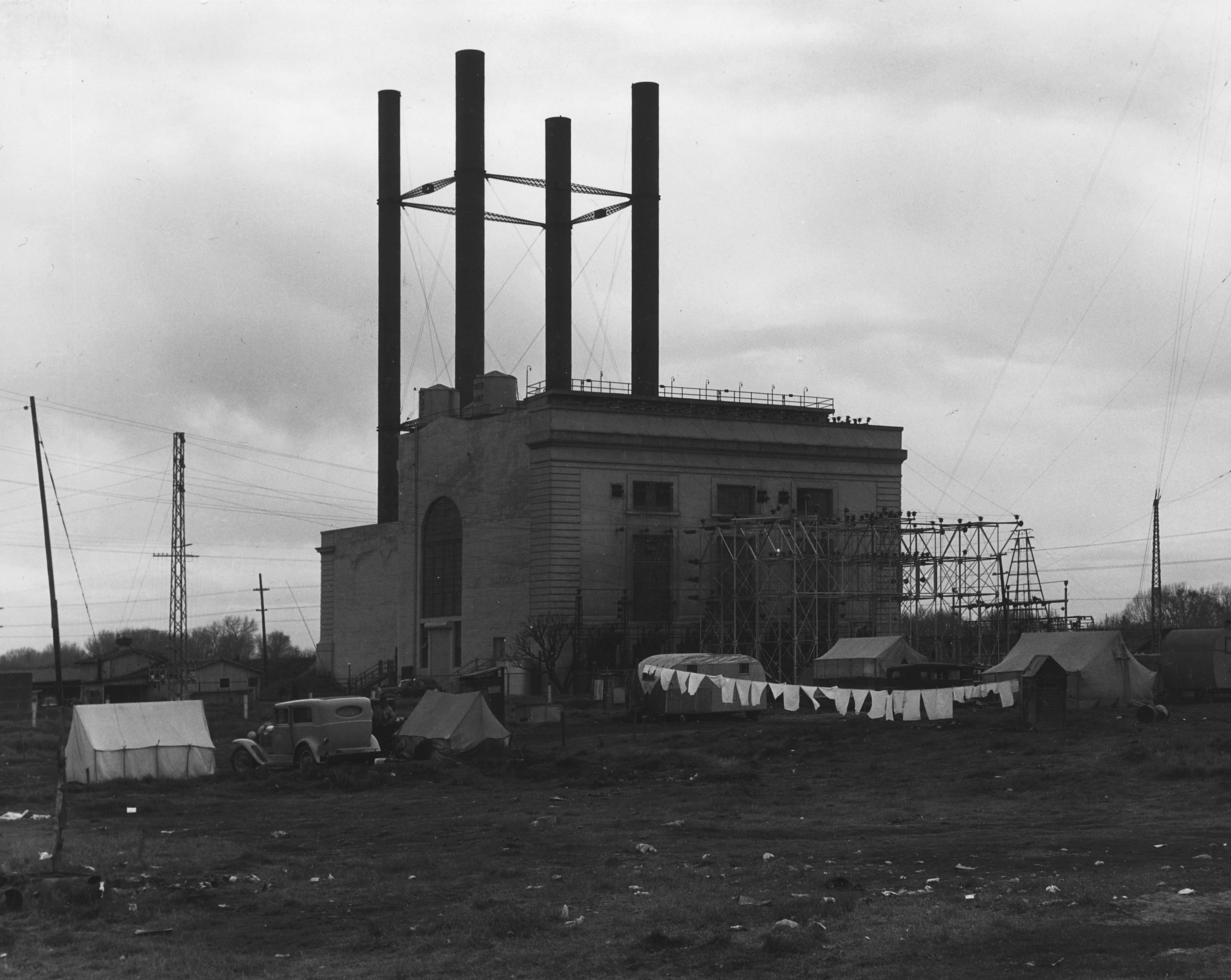
The grounds of the power station were used as a tent city during the Great Depression. (Dorothea Lange/Courtesy Dreyfuss + Blackford)
Dreyfuss + Blackford, in its role as both project architect and historic preservation architect, completed its first conceptual design for the future Powerhouse Science Center site in 2007. The science center complex was subsequently redesigned twice—in 2011 and 2014—with the final iteration of the design finally moving forward in 2016 after the city committed to additional funding for the fits-and-starts-prone project. MOSAC now serves as the anchor of the completed first phase of the city’s Robert T. Matsui Waterfront Park. Bringing the landscape up to the level of the levee, the park is an improvement project initiated by the city following the construction of a new intake point for a water treatment plant located directly opposite I-5 from the redevelopment site.
“It was in really rough shape,” Costa said of the old power station’s condition when the firm was first tapped for the ambitious riverfront infill effort. “And we’ve been able to watch it degrade over time.”
Referring to the riverfront area just north of Old Sacramento as “once very downtrodden,” project design architect Jason Silva (also a longstanding team member alongside Costa) credits the redevelopment of the River Station B site for helping to spur other north-of-downtown revitalization efforts such as 244-acre Sacramento Railyards, one of the largest sustainable development projects in the United States. “It’s really been a catalyst because the whole downtown region basically ended at Old Sacramento, which is aligned with the downtown grid to the south of the site. But all of the area was pretty much abandoned to a degree, and this was just one of those blighted spots along the way.”
“The city had tried and worked on it,” Silva added. “But it wasn’t until now that this has become really part of the regeneration of that area.”
Crumbling cartouches and levee concerns
Bounded by I-5 and the river, the island-like development zone—both a brownfield and former Superfund site—presented the design team with considerable challenges. As Silva explained, the area where the team could work was limited due to presence of “off-limits” hazardous waste caps; as a result, the design of the facility was guided by the tricky, constricted nature of the site. Also proving to be a challenge was meeting the “sometimes changing” conditions established by the U.S. Army Corps of Engineers, which oversees a 12-mile levee system that directly abuts the historic power station.
The Army Corps of Engineers had a “requirements for how we address our structure relative to their levee,” explained Silva. “We had to do sheet pilings, that would have structurally separated the levee from the foundation and the weight of the building. This was so that the building once completed would not, with liquefaction, undermine the levee because of the weight of the building pushes down and can pull the levee to failure.”
Joining technically complex engineering concerns, exhaustive environmental mitigation and historic preservation played major roles in the transformation of the decaying Classic Revival power station. Significant efforts including demolishing the structure’s existing roof and bringing down the structurally unsound east wall, which Holt described as “kind of a gift that allowed the contractor to do a lot of things that they hadn’t figured out how to do.”
Another effort involved replicating one of the concrete structure’s signature decorative flourishes: a crumbling, cast stone cartouche located above the power station’s original front entrance. With the aid of local artist Stephanie Taylor, it was recreated using glass-fiber reinforced concrete.
“That’s a really interesting story that in some way encapsulates the story of the project itself,” said Holt of the cartouche replication. “We wanted to keep it and wanted it to be restored to its previous grandeur, noting that the original design and construction of it wasn’t the greatest. But we wanted to put it back as close as we could to what it was.”
And while they don’t serve as the main MOSAC entrance, the monumental, four-leaf doors directly below the cartouche function as an emergency means of egress and will be opened during stretches of agreeable weather and for special outdoor events held along the side of the building. “We didn’t want to just put back a regular set of exit doors,” said Holt. “We wanted it to be something special.”
Converting the cavernous interior spaces of the former power station into a multi-level exhibition area turned out to be one of the more straightforward elements of the project.
“The large volumes of the powerhouse really suited themselves to this,” added Costa. “From the get-go, we always knew we wanted exhibits in the historic building–—they’re just large open spaces.”
MOSAC’s main permanent exhibits are: Destination Space, Health Headlines & Innovations, Water Challenge, Nature Detectives, Powering Change, and Building Sacramento. The historic building also includes space for temporary traveling exhibitions and a makers lab.
As for the 22,000-square foot addition, its program includes dedicated classroom spaces, administrative offices, café, gift shop, and a 122-seat planetarium, the UC Davis Multiverse Theater, that ranks as the largest attraction of its kind in the region. Visitors enter MOSAC through a glassy entry plaza at the new building before eventually finding their way to the exhibition areas within the adjacent historic structure. As noted by AN when the design was first revealed, the new building is intentionally deferent to William Polk’s classical design.
“As representation of our place in the universe, the facade and building mass are sectioned by multiple planes, creating continuous vector lines that extend across the building and site,” the firm explained in a press release. “From satellites to world landmarks, the lines form connections with local and global points of interest.”
Going platinum
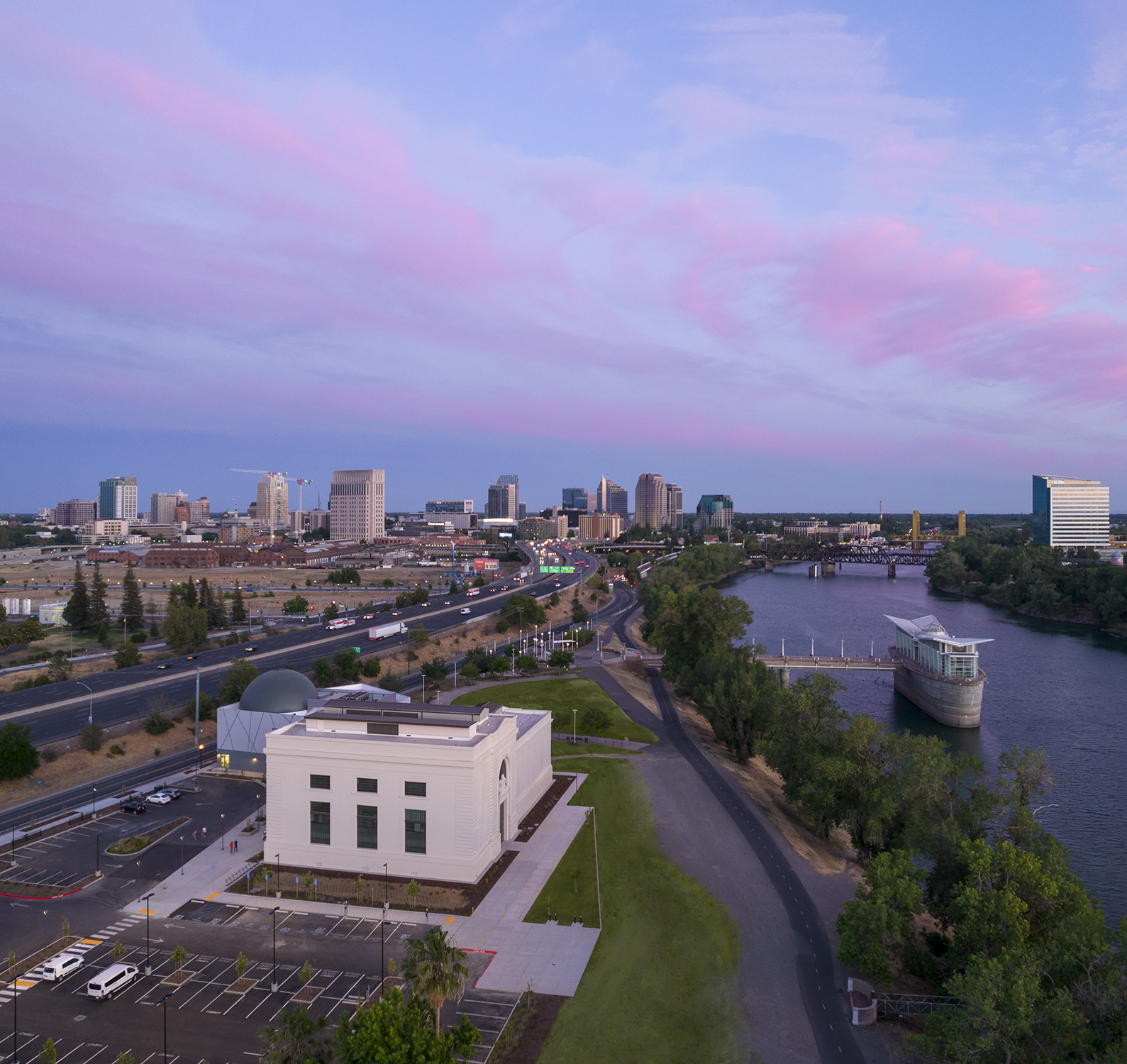
View of MOSAC looking south toward Old Sacramento and downtown. Across I-5 is the Railyards redevelopment zone. (Kyle Jeffers)
The MOSAC project is LEED Platinum–certified, thanks in part to an on-site stormwater treatment system, biodiversity-bolstering native landscaping, and a high-efficiency HVAC system. “We also utilized a federal Superfund site that was also brownfield and derelict, and we reused the building substantially—and that went a long way,” said Holt of the project’s LEED Platinum bona fides. In total, roughly 96 percent of the historic building’s existing walls and floors were reused.
Working alongside Dreyfuss + Blackford to reimagine the site and achieve LEED Platinum in the process was a larger project team that included general contractor Otto Construction along with Jacobs (landscape architect), Buehler Engineering (structural engineer), Capital Engineering Consultants (mechanical engineer), the Engineering Enterprise (electrical engineer), NV5 (civil engineer), Simpson Gumpertz & Hege (exterior repairs and waterproofing), and Charles M. Salter Associates (acoustics). Pennsylvania-based projection dome specialists Spitz, Inc. led the design of the UC Davis Multiverse Theater.
Holt noted that another aspect that helped the project reach Platinum status was Sacramento Regional Transit’s launch of a free, on-call shuttle to MOSAC and Robert T. Matsui Park, which will also be home to a forthcoming cherry blossom park from the Sacramento Tree Foundation. Dubbed the Hanami Line, this new civic gather place is set to break ground just south of MOSAC later this year.
While easy to access by private car or by bicycle via the American River Bike Trail (there’s both a new surface parking lot and ample bike parking), the site is not currently served by a bus line. “There are a couple of lower income neighborhoods outside of walking distance, but not far enough away to get in their car and drive. And so to be able to leverage that is going to be great for the community,” Holt said.
Referring to the building now known as MOSAC as a “passion project for the office,” Costa emphasized the critical role that the redevelopment of a prominent local eyesore into a community asset and regional destination has played in the rebirth of a once-neglected stretch of the Sacrament riverfront. It’s a project, that as she explained it, hits close to home. “We are the architects, but we are also part of this community,” she said. “We live here and are raising families here and choosing to live our lives here.”
